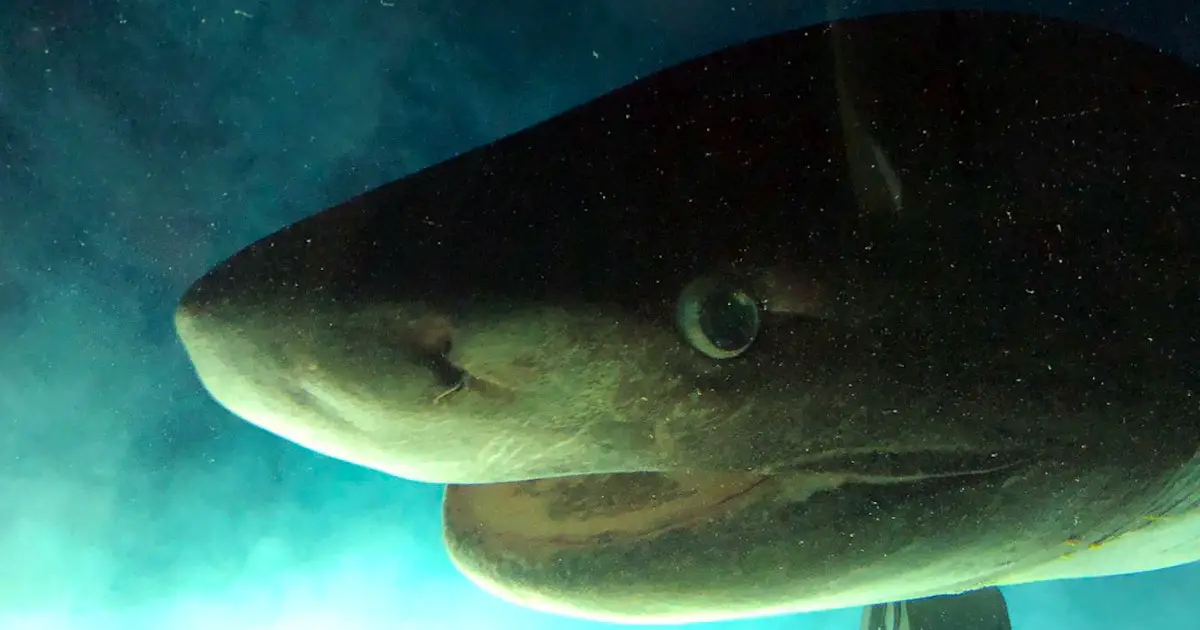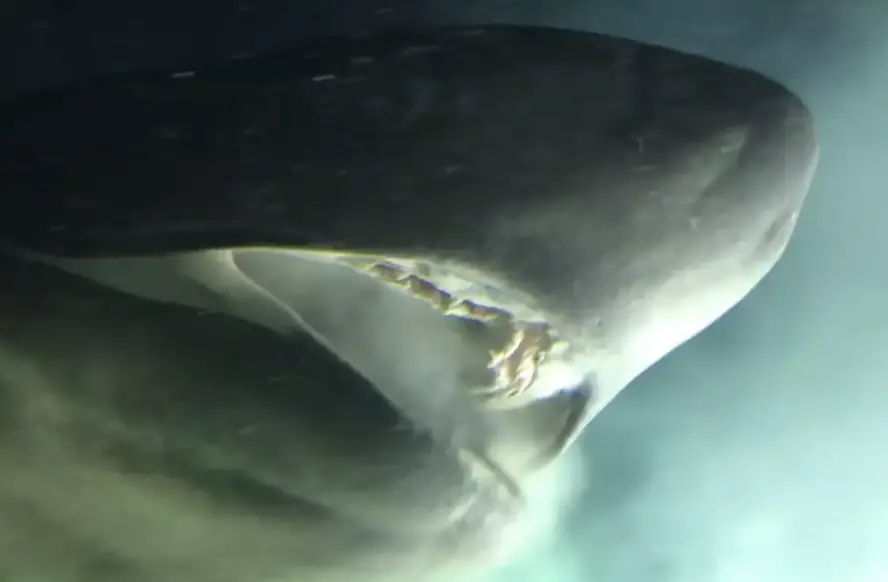Footage from a sub on the ocean floor shows it coming into contact with a ‘deep-sea monster’ that predates dinosaurs.
Many of us have a (very reasonable) fear of the ocean – the mysteries of the deep are understandably scary for those of us on dry land.
It’s rare we ever get to confront such fears.
But now, insane footage from the ocean floor is leaving people speechless.
Related Article: Man Drops GoPro Under Cruise Ship And Footage Leaves People ‘Terrified’
Related Article: Woman Warns Social Media Why They Should ‘Never’ Use The Swim-Up Bar At Resort Pools
The video has caused a splash (sorry) and is quickly going viral.
Viewers have been left chilled after watching the footage, with one person commenting: “I had an internal panic attack watching this lol. Deep water and large fish terrify me.”
Another pleads: “Just leave it alone!”
“Wow, that could have been born in the 17th or even 16th century,” a third writes.

A group of OceanX researchers achieved a remarkable feat in 2019 by diving hundreds of meters beneath the surface and encountering a creature, which has been likened to a monstrous entity.
The exploration initiative is ‘harnessing scientific, media and philanthropic partnerships to accelerate change for the oceans’, as described on its website.
The footage has since been viewed over 25 million times – people have been left astounded by the video of the predator, which purportedly surpasses the age of dinosaurs.
It shows the massive creature leisurely swimming over the underwater craft, curiously inspecting the researchers within.
So, what is the creature that has made everyone’s heart skip a beat?
Related Article: Man Swallowed Whole By Whale Says It Wasn’t Even The Scariest Thing To Happen To Him
Related Article: Expert Shares The Reason Nobody Has Ever Found Human Remains Inside The Titanic
Initially mistaken by some as a megalodon shark, the deep-sea monster encountered by the OceanX team was actually a bluntnose sixgill shark, also known as a cow shark.
Sharks are often described as living fossils and the earliest evidence of the creature or their ancestors dates back to 450 million years ago, according to the Natural History Museum.
The bluntnose sixgill shark, which is found all over the world, is thought to grow over 20ft in length and is named after the fact the species have six-gill slits on each side of the body – unlike most species of shark which have five, as per British Sea Fishing.
It’s a poorly understood species, with little known of its behaviour, feeding or reproduction.

The OceanX team has etched its name in history with this extraordinary moment being captured.
On YouTube, the researchers explain: “Our objective was the deep-sea shark, the bluntnose sixgill.
“This ancient species predates most dinosaurs and is a dominant predator of the deep sea ecosystem.
“The lead scientist on the mission, FSU Marine Lab’s Dr Dean Grubbs, has been the first to put a satellite tag on one of these elusive sharks, but until now had only been able to do so by bringing them up to the surface.”
Since posting the clip, the OceanX team has taken to Reddit and opened the floor to any questions.

One person asked in the thread: “How often does the tag check in with satellites? Do the sharks have to rise to a certain depth for the tag to communicate?”
Lucy Howey-Jordan, from OceanX, replied: “There are satellite tags that can report to the satellites when an animal’s at the surface, however, because these are deepwater sharks that never go to the surface, we use archival tags (they’re kind of like a Fitbit in that they’re a small device that records and stores a bunch of data but to send it later). When the tag pops off it sends the data to a satellite.
“There’s a small piece of metal that attaches the tag to the animal and after a certain amount of time there’s an electrical current that corrodes the piece of metal and it floats to the surface.
“So the tag doesn’t ‘check in’ but the data does take a few weeks to download because there are only short periods of time when satellites are actually overhead to receive the signal over the course of a day, or even how many satellites are available to that part of the planet. It can also take a long time if there’s a lot of data in the tag/if the memory is full.”
While this is all pretty fascinating, it’s safe to say we won’t be venturing into the ocean anytime soon…
You can watch the full footage the OceanX team captured here.
Do you have a story for us? If so, email us at [email protected]. All contact will be treated in confidence.





